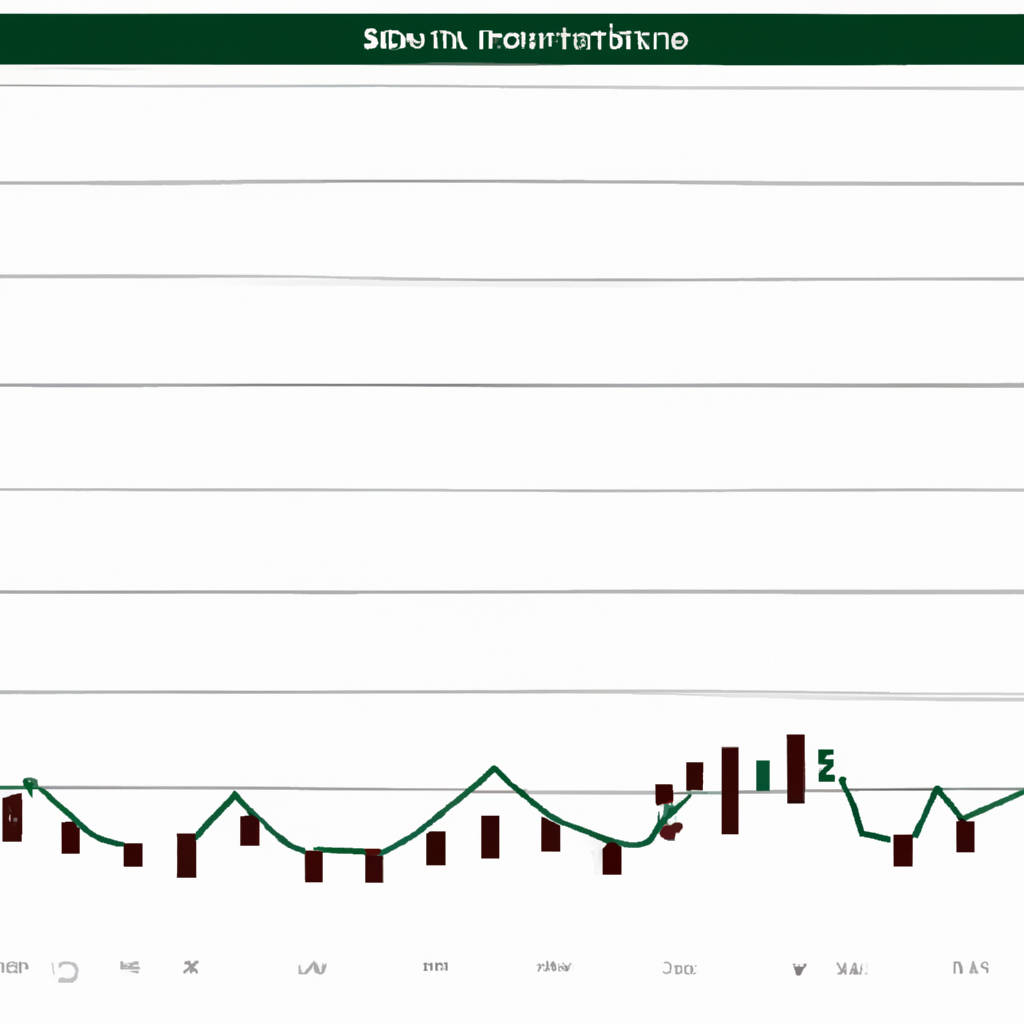Market activity often fluctuates in response to a myriad of factors, including economic indicators, global events, and corporate earnings. One common occurrence in the stock market is an initial stock rally, followed by a subsequent fade. This phenomenon begins with a surge in stock prices, driven by enthusiastic buying from investors. This initial rally can be sparked by various catalysts, such as positive news about a company, an encouraging economic report, or a significant macroeconomic event. Traders and investors, encouraged by these bullish signals, begin to buy shares, driving prices upwards and creating a rally.
However, this initial burst of enthusiasm is often followed by a period of decline, known as a fade. This drop in prices occurs when the initial optimism starts to wane and market participants begin to sell off their shares. The reason for this can be as varied as the triggers for the initial rally. It could stem from a change in economic conditions, disappointing corporate earnings, a shift in investor sentiment, or simply a realization that the initial rally was overdone and share prices are now overvalued.
The fade can be gradual, with prices slowly declining over a period of time, or it can be rapid, with prices plummeting in a short span. The speed and magnitude of the fade often depend on the strength of the initial rally and the subsequent catalysts for the sell-off. A strong rally based on solid fundamentals may experience a slower and less severe fade, whereas a rally driven by speculative buying may witness a swift and significant decline.
In the world of trading, strategies have been developed to profit from these market movements. Some traders may aim to buy stocks at the beginning of a rally and sell them before the fade begins. Others may attempt to short sell stocks during the fade, profiting from the decline in prices. However, timing these market movements accurately is extremely challenging and involves a high degree of risk. Therefore, it requires thorough research, careful analysis, and a deep understanding of market dynamics.
Understanding the cycle of initial stock rallies and subsequent fades is crucial for investors and traders as it can provide valuable insights into market behavior. It can help them make informed decisions, formulate effective trading strategies, and manage risk effectively. However, it is important to remember that the stock market is inherently unpredictable and can be influenced by a multitude of unforeseen factors. Therefore, while the pattern of rally and fade can provide a general guide, it cannot guarantee specific outcomes, and investors should always exercise caution and conduct thorough research before making investment decisions.
In conclusion, the cycle of an initial stock rally followed by a subsequent fade is a common occurrence in the stock market. It reflects the ebb and flow of investor sentiment, the dynamic nature of economic conditions, and the constant interplay of various market forces. By understanding this cycle, investors and traders can gain a deeper insight into market behavior and potentially improve their trading outcomes. However, it is essential to approach this with a robust risk management strategy and a healthy dose of realism about the unpredictable nature of the stock market.

Federal Reserve’s Role: Balancing Act Amid Economic Data
The Federal Reserve plays a pivotal role in managing the United States economy, often compared to a high-wire balancing act amid the constant influx of economic data. On one side of the balance is the goal of maximum employment, and on the other side is the goal of stable prices. The Federal Reserve uses various tools, such as adjusting the federal funds rate, to influence the availability and cost of money and credit.
This, in turn, affects spending and investment decisions by consumers and businesses, impacting overall economic activity. The central bank must carefully analyze an array of economic indicators such as inflation, unemployment rates, GDP growth, and others, to make informed decisions. The challenge lies in the fact that these indicators do not always point in the same direction, requiring the Fed to weigh the relative importance of conflicting information and make judgment calls. For instance, a decrease in unemployment might signal a heating economy, suggesting a need to raise interest rates to prevent inflation.
But if GDP growth is slow, raising rates could dampen economic activity and slow growth even further. Through careful and strategic decision-making, the Federal Reserve seeks to maintain a delicate equilibrium, promoting healthy economic growth without sparking inflation or creating asset bubbles. It’s a complex, imprecise science that requires constant monitoring and adjustment.
The Federal Reserve’s balancing act is crucial to the stability, health, and prosperity of the nation’s economy. As such, it carries a tremendous responsibility, demonstrating the importance of having a central bank that is independent, transparent, and accountable. The organization’s decisions not only impact the U.S. but also have significant implications for the global economy, given the influential role of the U.S. in international financial markets.
Factors Influencing Market Sentiment: Data Releases and Policy Outlook
Market sentiment, or the overall attitude of investors towards a particular market, is influenced by a range of factors, with data releases and policy outlook being two of the foremost among them. Data releases, such as earnings reports, GDP figures, job statistics, and inflation data, play a crucial role in shaping market sentiment. Investors closely monitor these indicators to estimate the economic health of a country or a company and make investment decisions accordingly. For instance, higher-than-expected earnings or positive job growth figures can boost market sentiment, leading to an increase in stock prices.
On the other hand, policy outlook, which refers to the projected course of future policies, can also significantly impact market sentiment. This is particularly true in relation to fiscal and monetary policies set by governments and central banks, respectively. For instance, if a central bank signals an intention to raise interest rates, this could dampen market sentiment as higher borrowing costs might slow economic growth. Conversely, a potential tax cut or increase in government spending (fiscal stimulus) can improve market sentiment as they could spur economic activity.
Moreover, geopolitical events, trade policies, and global economic trends can also affect policy outlook and, by extension, market sentiment. For instance, the announcement of trade tariffs can influence market sentiment negatively due to the potential impact on global trade and economic growth. Similarly, an event causing political instability can lead to a shift in policy outlook, resulting in fluctuations in market sentiment.
Investors need to continuously monitor these factors and adjust their strategies accordingly. Understanding the interplay of data releases and policy outlook, and how they influence market sentiment, is key to making informed investment decisions in an ever-changing financial landscape.

Market Reaction and Volatility: Dynamics Following the Fed’s Tightrope
Market Reaction and Volatility: Dynamics Following the Fed’s Tightrope is an intriguing subject that focuses on the financial market’s response to the Federal Reserve’s monetary policy decisions. The “tightrope” is a metaphor for the fine balance the Fed maintains between stimulating economic growth and controlling inflation. The decisions the Fed makes, such as altering interest rates or adjusting the money supply, have a significant effect on the market, which can lead to either stability or volatility. Traders, investors, and financial analysts closely watch these decisions, as they can impact investment strategies, stock prices, and overall market trends.
Volatility is a measure of uncertainty or risk associated with the size of changes in a security’s value, and it often increases in response to events that are viewed as having a significant impact on future economic conditions. Therefore, when the Federal Reserve walks this ‘tightrope’, market volatility can escalate, particularly if the Fed’s actions are unexpected or perceived as potentially harmful to the economy.
The dynamics that follow the Fed’s tightrope walk are multifaceted and complex. They involve not only the immediate reaction of the financial markets, but also longer-term effects on economic growth and inflation. These dynamics can have significant implications for individual investors, institutional investors, and the economy as a whole.
Understanding these dynamics is vital for anyone involved in the financial markets. It can help investors navigate the often choppy waters of market volatility, and potentially enhance their investment returns. Moreover, it can provide policymakers and economists with valuable insights into the effects of monetary policy on financial markets and the broader economy. Therefore, studying the market reaction and volatility dynamics following the Fed’s tightrope is not only fascinating but also essential for anyone interested in the financial markets.
Implications for Investors: Strategies and Considerations Amid Uncertainty
Investors often operate under a veil of uncertainty, which can result from a variety of factors such as geopolitical changes, economic fluctuations, and social unrest. In these ambiguous times, it’s crucial for investors to develop strategies and consider certain aspects in order to navigate the rough waters and safeguard their investments.
Risk management should be a priority for investors, as it may involve diversifying their portfolio across different asset classes or geographical locations to mitigate potential losses. It may also be wise to maintain a certain level of liquidity in their portfolio, which can provide flexibility and allow them to seize opportunities as they arise. Investors should also consider the impact of macroeconomic factors and market trends on their investments. These might include changes in interest rates, inflation levels, and GDP growth rates, which can significantly influence the performance of different asset classes.
Moreover, investors should not overlook the importance of due diligence and thorough research when making investment decisions. This can help them understand the potential risks and rewards associated with a particular investment, enabling them to make informed decisions. Finally, amidst uncertainty, investors should perhaps avoid making impulsive decisions based on short-term market volatility.
Instead, they should focus on long-term investment goals and strategies, which have historically proven to be more successful. While uncertainty can pose challenges, it can also create opportunities for savvy investors who are able to adapt and strategize effectively. In conclusion, by considering these strategies and implications, investors can better equip themselves to navigate through periods of uncertainty and potentially achieve their investment objectives.

Conclusion
A conclusion serves as the final point of any discussion, research, or argument, essentially wrapping up the key points and presenting a final perspective on the subject matter. This essential part of any written piece, such as an essay or a thesis, provides an opportunity for the author to reiterate the primary points and tie them together cohesively, providing the reader with a comprehensive understanding of the topic.
A well-crafted conclusion should not merely repeat the information, but rather synthesize it, showcasing the relevance and importance of the points made. Moreover, a conclusion may also propose further examination of the topic, suggesting areas for future study or contemplation.
A strong conclusion significantly contributes to the overall impact of the piece, leaving an impression on the reader and providing them with a sense of closure and satisfaction. It is vital to remember that the conclusion is the final opportunity to leave a lasting impression, therefore, it should be articulated thoughtfully and persuasively.
The art of concluding is not merely summarizing the presented information, but rather leaving the audience pondering over the discussed topic, provoking their thoughts and emotions, and inspiring them to reflect further on the subject matter. This final part of any discourse thus carries immense weight and should be given due attention and effort in its formulation.

